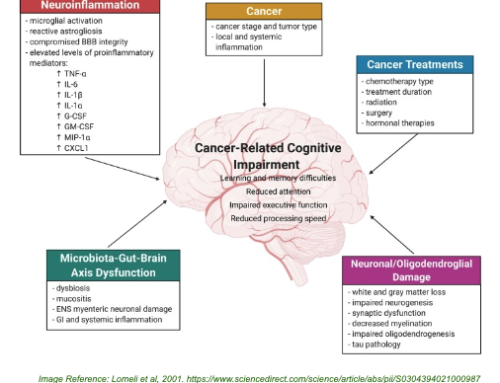From the very beginnings of medicine thousands of years ago right up until today, the sick or injured have always acted as passive receivers of whatever medical intervention a professional thought best. And for the most part, this traditional or ‘standardised’ care has worked.
But recently faults have been found in the standardised approach.
As humanity’s knowledge has grown and become more accessible, standardised care has been found to have serious limitations. It does ’to’ people and ‘for’ people, but rarely ‘with’. Feelings of detachment and powerlessness can see patients failing to offer up all the information needed for a professional to make an informed treatment decision. Dominoes begin to fall; resources are misallocated, costs rise, coordination between health providers becomes difficult, and a lack of understanding results in a lack of compassion from caregivers.
But there is a better way: person-centred care.
What is person-centred care?
Person-centred care can be thought of as a collaborative approach to health. In monodirectional standardised care the doctor speaks and the patient listens. In person-centred care, the patient and their family are included in health plan and treatment decision-making and all health professionals are given the same hymn book from which to sing.
This approach has been proven to improve clinical outcomes. Relevant information is made more available, allowing decisions to be made based on a more holistic view of the patient’s life. The overall perspective of the patient is considered, rather than the narrow one within which most doctors usually work. Person-centred care is built on the supposition that all patients (and/or their families) are capable of making informed decisions, and therefore promotes autonomy. In essence, the patients take on some of the responsibility for their own health, as they always should have.
Person-centred care is built around four key principles:
- Health care should be built around individual needs and a basic right to health.
- Health institutions should focus on a patient’s abilities in order to solve their problems.
- Health care should be comprehensible, and patients should feel engaged.
- Health professionals should work from an ethical perspective, and must always treat patients with dignity, compassion and respect.
While person-centred care concepts were developed in the field of psychology as far back as the 1940s, holistic person-centred care is a product of this century. It was initially trialled in disabled and senior care, but has since spread across medical fields.

The benefits of person-centred care
When compared to standardised health care, person-centred care brings a wealth of advantages for all parties involved.
Consumer benefits
- Involvement in health decisions: Consumers are no longer bystanders to their own health care. They are consulted at every stage, and are actively involved in planning and decision making.
- Greater independence and autonomy: Because they enjoy greater control over their own health outcomes, patients become more independent and autonomous, relieving the strain on the Australian health system.
- More compassion: A greater understanding of the patient’s situation results in health workers offering greater levels of empathy, compassion and support.
- Improved satisfaction levels: Ownership, autonomy and greater understanding from professionals leads to greatly increased levels of satisfaction with the health system.
- Increased quality of life: More holistic and collaborative decision making leads to better health outcomes, increasing a patient’s quality of life.
Health provider benefits
- Greater coordination between providers: Person-centred care demands a system built for easier collaboration, not just between patient and doctor, but between each health provider too. Greater coordination means more efficient and effective care.
- Access to a more holistic patient view: Health professionals will no longer need to diagnose and treat issues based on a narrow set of symptoms. Greater information and collaboration leads to a more holistic view of an individual, more accurate diagnosis, and more effective treatments.
- Improved outcomes: According to UK data, when people play a more collaborative role in managing their health, they are more likely to stick to treatment plans, more likely to take medications correctly, and less likely to use emergency medical services.
Payer benefits
- Improved resource allocation: A person-centred approach ensures that health professionals aren’t prescribing medications that won’t be taken, writing referrals that won’t be used or performing surgeries that a patient would rather not have.
- Lower cost: By minimising both over- and under-use of healthcare resources, person-centred care lowers costs.
Switching from standardised to person-centred care
The switch from standardised to person-centred care begins with health professionals. Rather than viewing patients as a series of problems that need to be solved, doctors, therapists and other carers must instead view them as the individuals they are.
By adopting some simple habits, a health professional can transform their approach from standardised to person-centred:
- Ask the patient about their needs and preferences, and work to meet them
- Encourage and support involvement by the patient in their own health care planning and decision making
- Allow the patient to invite a support person or interpreter into a consultation
- Avoid technical speak in favour of easily understandable language
- Question the patient and collaborate with other providers to gain a holistic view of the situation
- Show respect and empathy for the individual
- Put a clear and simple feedback process in place in order to improve your ability to provide person-centred care
The switch to person-centred care is not a top-down movement, but a bottom-up one. A change of tack from health care professionals will be the catalyst for broader change in the health system; the sort that will make collaboration, coordination and resource management far easier.
While government programs like My Health Record will assist in making the switch, the reality is that the process has only just begun. If we’re committed to lowering health care costs while generating better patient outcomes, transforming our health system into one based on person-centred care should be our highest priority.
A health system that doesn’t do ’to’ patients or ‘for’ patients, but ‘with’ them. As little as a couple of decades ago this would’ve been at best a strange idea, and at worst an idiotic one. But in 2020, a system based on person-centred care is the most practical and advantageous option we’ve got.
The sooner it’s realised, the better.
If you’re interested in moving towards a person-centred care approach, Valion Health can help. Get in touch today.



